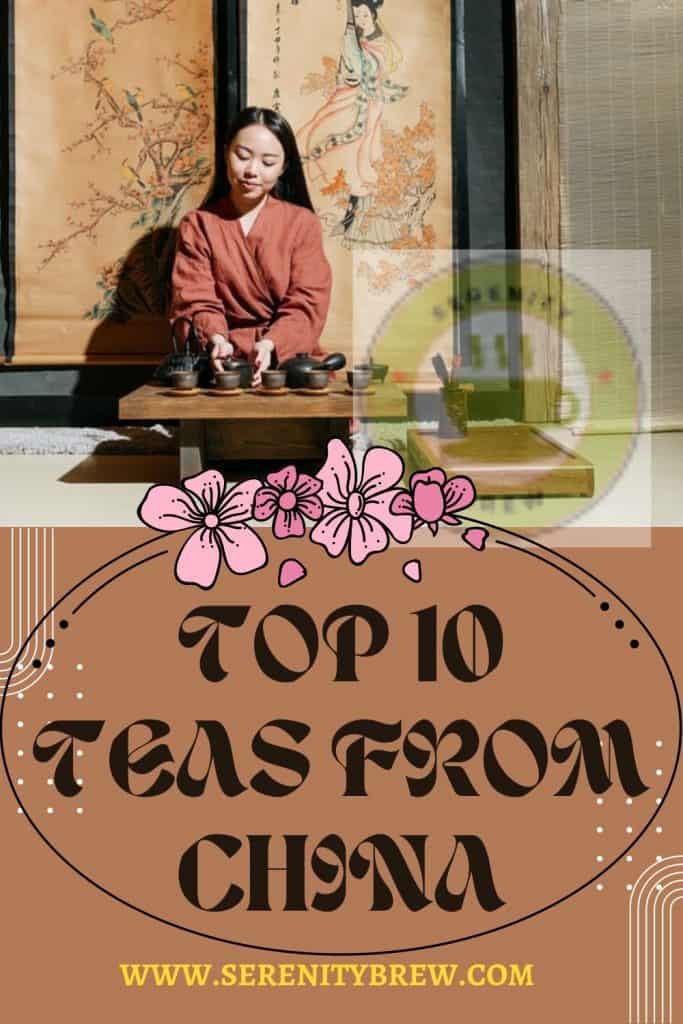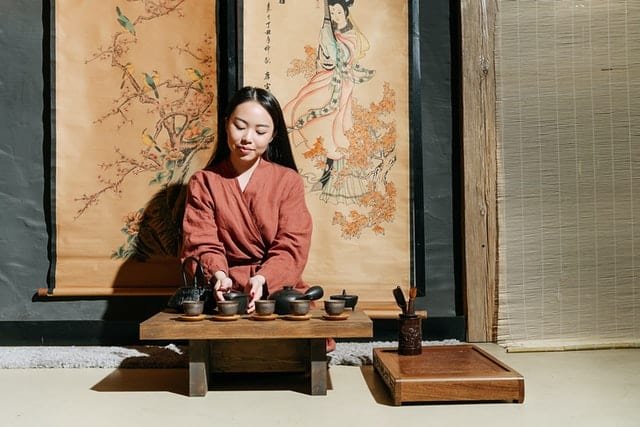
In the 1950s, the Chinese Ministry of Agriculture published a list they called “China’s 10 Great Teas.” This list was intended to make a selection, according to the criteria that prevailed at that time, of the best teas that were produced in China and that best represented its exalted tea culture.
It is impossible to talk about the world of tea without mentioning China. The Asian giant is not only one of the largest tea producers in the world, it is also its birthplace.
Did you know that the tea plant is called Camellia sinensis? Well , sinensis means “from China”. The ancient civilizations of the area discovered the virtues of the tea bush and began to cultivate it.
An entire culture that reaches our time has developed around this wonderful plant.
The original list of the 10 most famous Chinese teas
The original list compiled by the Chinese Ministry of Agriculture contained the following teas. The order is intentional and was intended to make a ranking of the most famous and appreciated teas in China.
- Longjing (green tea).
- Biluo chun (green tea)
- Huang Shan Mao Feng (green tea)
- Lu Shan Yun Wu (green tea)
- Liu An Gua Pian (Green Tea)
- Junshan Yinzhen (yellow tea)
- Xin Yang Mao Jian (green tea)
- Da Hong Pao (oolong tea)
- Tieguanyin (oolong tea)
- Keemun (black tea)
In China there are hundreds of varieties of tea. Why these?
The truth is that the criteria followed to build the list are not clear. It is not known whether quantitative criteria related to the tea market (consumption rate, sales volume…) were used or whether more subjective criteria came into play to judge how well a particular variety represented Chinese tea culture.
It is also important to note that the point of view for the list is purely Chinese. Some teas are wildly famous in China and hardly known in the West.
After the original, new lists have appeared trying to update or improve it according to questionable criteria. There is currently no official list. Several organizations have made their own lists that apply points of view that reflect the specific moment in the tea market or even more specific intentions.
The current list of the 10 most famous Chinese teas
The following list collects all these own rankings and tries to establish a generalization based on the appearance of each tea in them.
- Longjing (green tea).
- Biluo chun (green tea)
- Tieguanyin (oolong tea)
- Huang Shan Mao Feng (green tea)
- Junshan Yinzhen (yellow tea)
- Keemun (black tea)
- Da Hong Pao (oolong tea)
- Liu An Gua Pian (Green Tea)
- Bai Hao Yin Zhen ( white tea )
- Pu-erh (red tea)
As you will see, there have been some changes in the composition of the list. Although it continues to be headed by the excellent Chinese green teas, the complex and interesting oolong climb positions. A great Chinese classic also appears in the queue, the pu-erh. This variety of fermented tea was not included in the original list.
A short description of each tea
Honestly, it’s hard to make any recommendations as to which tea on the list to start with – there’s no going wrong. These 10 varieties represent the cream of an ancient tea culture. Each and every one of them is worth trying.
Longjing (en: Dragonwell , en: Dragon Well)
Category : green tea
Origin : Hangzhou, Zhejiang Province
Description : Longjing tea is called by some the queen of Chinese teas. It is known for its softness, its sweetness and the roundness of its body. Herbaceous aromas predominate and some vintages offer touches of a certain butteriness, like roasted nuts.
Biluochun (en: Green snail spring, en: Green spring snail)
Category : green tea
Origin : Jiangsu Province
Description : This tea is famous for its intense aroma and mild floral flavor. Leaf curled like a snail and very fine. It is said that its buds are so delicate that a kilo can contain up to 18,000 of them. This excellent raw material is used to make one of the most emblematic teas in China.
Tieguanyin (en: Iron Guanyin, en: Iron Guanyin )
Category : oolong tea
Origin : Anxi, Fujian Province
Description : Guanyin is the bodhisattva of compassion. Legend has it that he revealed to a farmer the location of the first plant that gave rise to this tea. Oolongs can offer a wide range of flavors depending on their degree of oxidation. This tea is closer to the usual flavors in greens, with delicate floral aromas but without pulling so much towards herbal touches and without any astringency.
Huangshan Maofeng (en: Yellow mountain fur peak, is: Yellow mountain furry peak)
Category : green tea
Origin : Anhui Province
Description : the peasants who cultivate it say that its shoots resemble orchid buds, and are covered with white hairs. This tea produces a delicate infusion, with a soft natural sweetness. Here again we find the complex floral aromas of high-quality green teas.
Junshan Yinzhen(en: Silver needles of the gentleman mountain, en: Silver needles of the gentleman mountain )
Category : yellow tea
Origin : Junshan Island, Hunan Province
Description : With a very limited production due to geography and harvest season, Junshan Yinzhen is a delicate yellow tea that is among the least common in the list of famous Chinese teas. Its vegetal sweetness makes one think of sugar cane. It is said that this tea was Mao Zedong’s favorite.
Keemun (en: Qimen red tea, is: Qimen red tea)
Category : black tea
Origin : Qimen County, Anhui Province
Description : Keemun began to be brewed in the late 19th century and quickly became a very popular tea in China and abroad. It is a smooth black, with a flavor that brings hints of malt and cocoa. Remember that the Chinese call red tea what we know as black in the West.
Da Hong Pao (en: Big red robe, en: Big red robe )
Category : oolong tea
Origin : Wuyi, Fujian Province
Description : The second oolong that appears in the list of the most famous Chinese teas. Very different than the Tieguanyin. Da Hong Pao tea has a high degree of oxidation, a factor that brings it closer to black teas, with warm and floral aromas.
Liu An Gua Pian (en: Lu’an Melon Seed, is: Lu’an Melon Seed)
Category : green tea
Origin : Anhui Province
Description : This is one of the famous teas that served as a tribute to the emperor in ancient China. The ever-witty Chinese gave it its name from the oval shape in which the leaves remain after infusing. Liu An Gua Pian is a fresh green tea but with a remarkable body, in which herbaceous and floral aromas predominate.
Bai Hao Yin Zhen (en: Silver Needle, en: Silver Needle )
Category : white tea
Origin : Fujian Province
Description : A white tea of the highest quality, made from the huge buds of the Great White, a variety of tea plant. White teas are usually recommended for experienced palates, as they are characterized by delicate and complex flavors. The aroma of Bai Hao Yin Zhen is vegetal and sweet, similar to that of freshly cut hay.
Pu-erh
Category : red tea
Origin : Yunnan Province
Description : The only fermented tea on the list. Pu’er is a very particular tea, in which bacteria and fungi act in a controlled environment to give the tea an outstanding character. Pu-erh tends to have a characteristic earthy flavor and a dense body.
Delve into Chinese tea culture

We hope this list has helped you discover a few interesting teas that you didn’t know about.
The richness of Chinese tea culture is amazing. There are literally hundreds of varieties of tea brewed in the country, from delicate whites to smoky black teas to countless green teas and the unpredictable oolong.
Do not settle in your usual teas, break your borders and launch yourself to discover rarities. Your palate will thank you.
